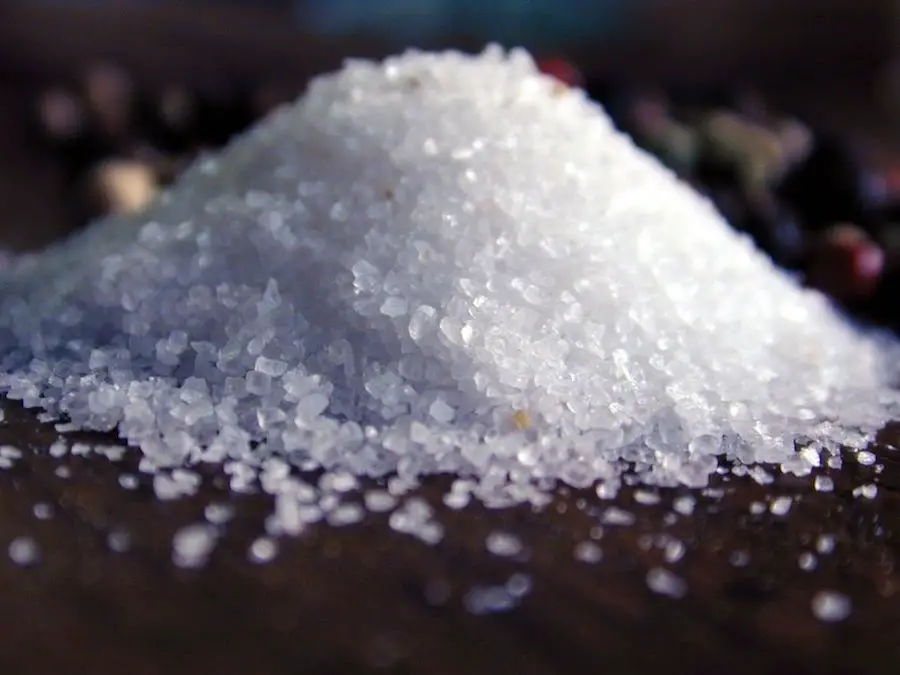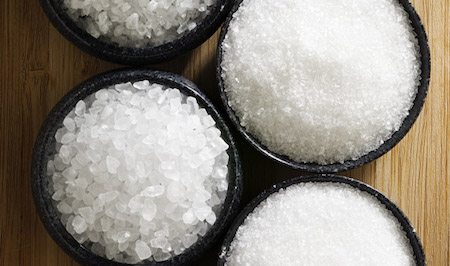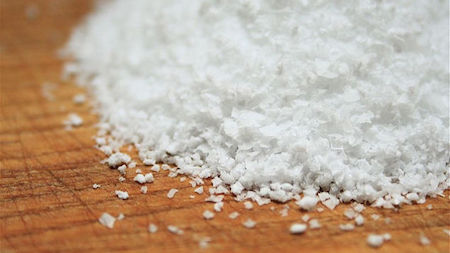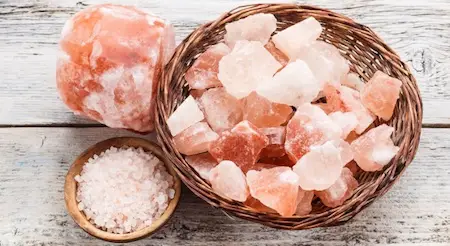Salt – it’s a vital part of every diet, both nutritionally and culinarily. Our bodies need salt to subsist at all which is good for us despite the bad rap that sodium gets.
To make it simple, the evolution of food has destroyed the notion of salt being a healthy addition to food, when in fact, it is. The problem lies in packaged foods, TV dinners and processed meats which contain excessive amounts of sodium – and that’s not even the same as salt. We avoid sodium inherently because we believe it’s synonymous with health issues like high blood pressure.
The truth is, a little bit of salt won’t hurt. It can indeed raise blood pressure as it binds to the bloodstream, but choice is everything here. Besides, who wants to eat tasteless dinners?
Salt is how you bring out the true flavor in food, and it’s a simple way to add depth to standard meals.

Before we give all salts the green light, let’s just say that not all salt is created equal. As the “artisanal” salt market grows, you’ll likely come across salt you’ve never heard of before.
You may wonder if you can substitute sea salt for kosher salt in a recipe. You might be curious as to how you can choose the healthiest salt of them all. We’re here to clear the air. Let’s talk salt!
Sea salt

Sea salt is actually pretty good for you in moderate amounts, and it comes in as a winner on our list. It’s easy to source, and it’s moderately priced compared to our winner below, so it’s accessible to everyone.
It’s wide availability is also its huge downfall. Now that sea salt has become a pretty popularized food product, many brands are selling their own versions. You’ll learn more about reading labels with table salt, but the same goes for sea salt.
Ideally, sea salt is in its pure form. It contains all the essential nutrients and minerals unique to salt – and necessary for our bodies – in their properly balanced form if the final product is unprocessed with heat or added chemicals.
While sea salt is approximately the same as table salt in terms of chloride and sodium (what all salt is comprised of), its crystals are larger, and you don’t have to use as much for the same flavor.
Switching over to fresh ground sea salt can reduce sodium intake rather effortlessly if that’s a major concern for you.
Sea salt is particularly well known for preventing dehydration, while salt is often thought to be a catalyst in becoming dehydrated. This is false!
You can read more about SOLE (a.k.a. salt water) and the health benefits of drinking it in our feature on the water of the Hunza Valley. If you like your food on the salty side, opt for a sprinkle from under the sea.
Kosher salt

Kosher salt is popularized by recipes. If you’ve watched your fair share of The Food Network, you’ve likely seen a whole lot of kosher salt get tossed into those pots and pans. There’s a reason why it’s so fantastic to cook with.
This is partially because the size of its flakes makes it easier to pick up and evenly distribute over food with your hands. Otherwise, when dissolved in food, it’s roughly the same as table salt (our final contender).
While kosher salt doesn’t necessarily boast any benefits that sea salt doesn’t cover, it is a suitable option for cooking and keeping around the kitchen.
It generally doesn’t contain additives, anti-caking agents or added iodine, so you don’t have to worry about chemicals sneaking into your salt.
Himalayan pink salt

Himalayan pink salt is one of the healthiest salts on the planet for a few reasons, namely, its mineral content. Like sea salt, this unrefined gem exists because the source of the salt was first covered in lava which preserved the salt from pollution, and then it was tucked high up in the mountains, protected by a thick layer of snow.
Evidently, this preservation method worked wonders; it is fresh when mined and up for grabs. This is why Himalayan pink salt might run you up a larger bill; you are paying for quality!
It’s loaded up with 84 unique trace minerals like sulphate, magnesium, calcium and potassium. These minerals, which amplify the importance of getting enough salt, can regulate electrolyte and pH balance in the body, increase hydration, and actually lower blood pressure.
Himalayan salt is thought to be the purest form of sea salt; it possesses many of the same health benefits and more. It contains less sodium than table salt, helps to detoxify the body of heavy metals, is thought to increase libido, and can reduce signs of aging.
So, who told you to watch your salt intake again? Just tell them it’s Himalayan pink salt.
Table salt

Also known as iodized salt, here’s what you’ll come across perhaps the most often. When you sit down at an average restaurant or diner to eat, here’s what you’ll find. A shaker of this likely graced – or graces – your dinner table at one point.
This seemingly innocent kitchen staple isn’t all it’s cracked up to be. It comes in near the bottom of our list because it’s the ‘processed’ food of the salt world.
Table salt is made from heating sea salt – which is where all salt is derived – at 1,200 degrees fahrenheit. The naturally occurring minerals and elements that make sea salt a healthy choice are mostly obsolete when the process is over, so what you’re left with is a salt-like product.
To make it worse, the salt gets a bit of extra treatment before it hits the supermarket shelves: synthetic chemicals like fluoride and iodide sneak their way in, and sometimes you’ll find MSG or sugar hiding out – yikes!
While plain table salt won’t kill you, it’s important to read your labels before purchasing salt. The only ingredient that has its place in salt is salt. Table salt is the culprit to blame in the myth that salt = high blood pressure.
This is because the toxins require demand of the body to move them out as quickly as possible. It goes without saying that table salt is what you’re going to find in most packaged foods with exorbitant amounts of sodium, so read your labels if you’re buying from the box or the can.
What are your favorite salts to use? Tell us about your collection!
Music, mountains, dogs, travel, food and friends.

